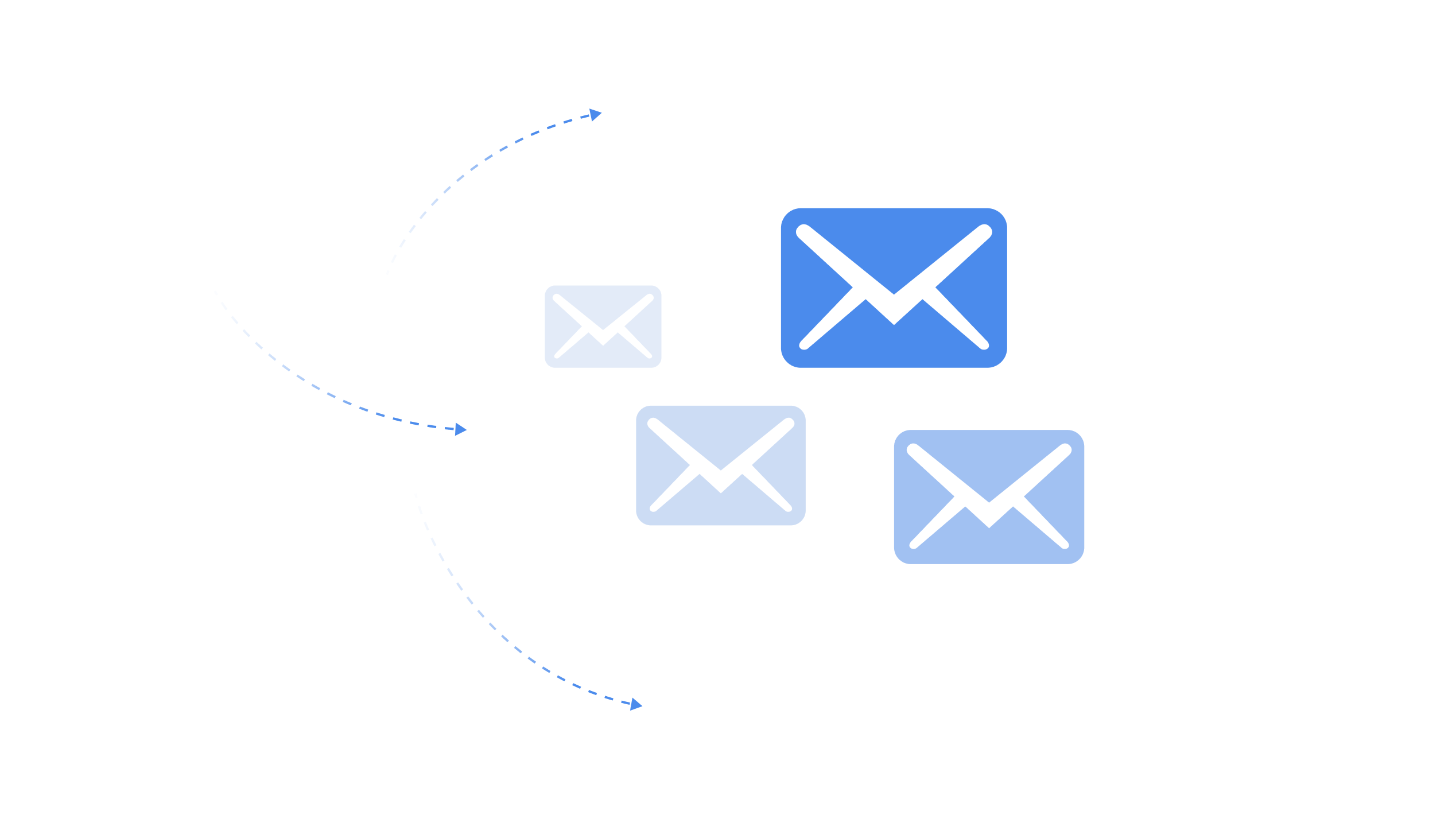Emails always have and always will be an integral part of your marketing efforts—be it Inbound or Outbound. We often come across the debate about whether emails are Inbound or Outbound. The simple answer is—they can be both! Understanding the difference between these two categories of email can instantly help you write them better, for generating and nurturing leads.
Understanding the difference between Inbound and Outbound emails
We often distinguish sales and marketing efforts as Inbound and Outbound. Inbound marketing is the practice of drawing in potential leads and prospects via strategic content tailored to their needs and interests. On the other hand, Outbound marketing is the more traditional method of marketing that involves reaching out to your audience with content.
Inbound marketing focuses on drawing your audience’s attention to your brand rather than seeking out any audience (which we do in Outbound marketing). When focusing on Inbound marketing, you would be creating awareness about your brand, providing your audience value, and educating them about the need for your product/service. Email acts as the medium through which you impart awareness to them.
What is Outbound email marketing?
Outbound marketing, on the other hand, focuses on presenting the brand to its target prospects in the best possible way—elaborating why they are the ideal choice for them. Outbound is often perceived as a digital version of cold calling. However, understanding that it requires building trust with the recipient and providing them value makes it different from traditional cold calling.
Do’s & don’ts of Outbound emails
While drafting Outbound emails, it is important to ensure that you keep a few things in mind that’d help you structure your emails efficiently. Here’s are a few tips to help you enhance your copy.
Do’s
- Understand the prerequisite of sending Outbound emails. One of the most important things to always keep in mind while drafting Outbound emails is—you are sending this to a group of people who are not expecting it (unlike in Inbound email marketing). They haven’t shown interest in your product/service yet. Therefore, you have to be very subtly persuasive and avoid being pushy.
- Empower your writing with knowledge and research. To make sure that your Outbound emails drive action, the bare minimum is to research your company’s true value propositions—what are you offering your recipients’ company with your product/service, how it benefits your recipient, and a thorough understanding of the recipient’s business (in case of warm emails) to truly tap into their needs/requirements.
- Always refer to data and numbers. The process of creating superior Outbound emails revolves around constantly testing, improving, implementing, and re-visiting your strategy. Over a period of time, you have to learn and unlearn the elements of emails to cater to the audience you are handling. For example—a few years ago, promotional emails were less likely to get marked off as spam, with the categorization of emails, Outbound emails now tend to get fewer eyes. In this scenario, learning how to change ways of writing and presenting reflects the dynamic & evolving nature of writing emails. Referring to metrics can provide clarity on what is working and what is not.
Don’ts
- While drafting your Outbound emails, do not forget Call-to-Actions (CTAs). Try to avoid overwhelming your emails with multiple CTAs as your messaging should be clear on what action you expect the recipient to take.
- Avoid being too professional or formal. Let’s be honest; we receive hundreds of sales emails every week. The aim should be to stand out with copy and design that’s different and attention-grabbing. The element of surprise can help get attention and ultimately, action.
- Try not to beat around the bush about your intent. Even if you want to provide value more, making it clear from the beginning that you are expecting action from the recipient makes them build confidence in you. There’s always respect for transparency.
- Don’t get too carried away drafting subject lines. As much as subject lines are important, they are not the sole important factor in your emails. If you have a great subject line, you will have a great open rate. However, without a strong body, the bounce rate of the email will be high. Keep that in mind while drafting your emails.
Crucial elements of an Outbound email that set it up for success
1. Personalization
Nothing touches your recipient more than personalization. You can significantly improve your open and response rates with email personalization. Emails with personalized subject lines are 26% more likely to be opened. That’s because personalization taps into one of the most important components of email marketing—gaining trust and building a connection with the recipient.
2. Tap into their pains
It is important to understand the common problems that are faced by your segmented list of contacts. This is important to determine how you will position your brand as a solution to their underlying problems. Be clear in the understanding of why your targeted audience needs your solution and how you can provide them with a breakthrough in understanding why.
3. Make it simple and easy to comprehend
When drafting Outbound emails, try to keep the language friendly, and the body precise. and the call-to-action relevant. It’s important to give your recipient all the information needed to do the next thing i.e. take action.
Ask them to respond back, and you will see natural replies with the smallest of queries. These queries are good for you in the long term since it helps you understand what is it that your prospects/customers are looking for. Knowing the challenges/needs your target audience has helps you position your brand better.
Finishing a good Outbound email with impact
You need to make sure your break-up email is not too focused on separation since you may want to reach out to them in the future too. However, it also shouldn’t be too action-oriented. The best intent for break-up emails is to reignite the conversation and connect, even if they’re not interested in your offer at this time. With this approach, you tend to gain trust and credibility instead of looking like just another salesperson.
All in all, great practice for drafting Outbound emails is putting yourself in the position of the recipient and then looking at the email. You can draft your emails and send them to yourself to see if you would read them yourself and identify any gaps as a result.




